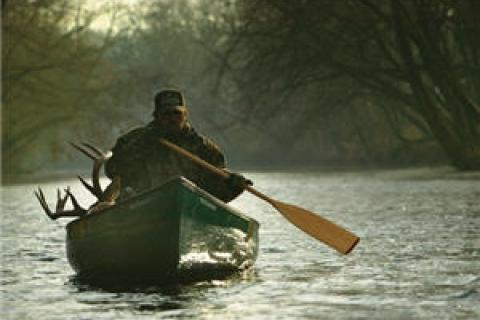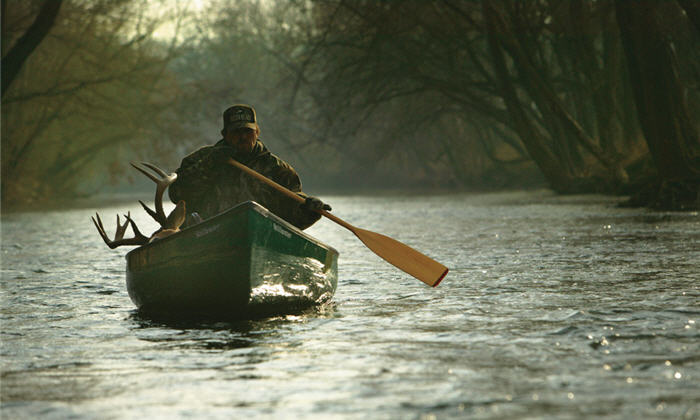
Those facing crowded conditions when deer hunting are always searching for secluded, overlooked spots. I’ve found a few such overlooked gems over the years. One such place you may not think of is an island.
 |
| Islands are tough to access and often a safe-haven for late season bucks. Perfect your setup, disturb the peace, and enjoy a victorious paddle back to the mainland. |
People tend to ignore these spots because they are difficult to access, but they can really provide top notch hunting. First, herds are often strong. The lack of pressure sometimes makes island deer less wary than mainland whitetails. And these isolated tracts typically hold a high percentage of older, larger bucks because of the seclusion they offer.
How to Hunt an Island Ungulate
Start your search by studying topographic maps and Google Earth. Maybe you can even remember some you’ve come upon during fishing trips.
Once you locate a few, try these two strategies.
Stand Hunting—Bucks pile into islands once the pressure builds on the mainland with open gun seasons. The key to harvesting one of these brutes is knowing how they get there and pinpointing where they enter these isolated tracts.
Deer sometimes swim to reach islands. If possible, though, they prefer to wade. Look for shallow riffle areas (squiggly lines on topos) where they can most easily access the island. Then scout for trails on the mainland with fresh sign leading down to these funnel points.
Now wade or take a boat over to the island and see where they emerge from the water. Hang your treestand or set up a ground blind in the nearest thick cover downwind from there. You’ll often hear the deer sloshing up onto shore before you even see them.
Get ready. Your buck could be there any second.
Do a Drive for Big Buck Castaways
Islands are perfect for drives, particularly in the late season when the number of animals they hold swells from pressure on the mainland. The problem of drives in general is finding a contained, well-defined area that can be pushed. Islands solve that.
Position one stander at the far end of the island, one at a likely shallow spot where the deer might try to break out and cross over to the mainland. Now send the drivers slowly through the cover, working with a tail or crosswind. They should move carefully and pause often. Kicking any brush piles and blow-downs they come upon is also a good idea.
Another drive I like for islands involves two walking hunters and no standers. One person works through the island at a slow to moderate pace while a second hunter trails behind at a 45 degree angle on the downwind side, 75-125 yards back. The exact distance will depend on the thickness of the cover and visibility.
The first hunter may walk up on a buck and get a crack. Often, though, he’ll just kick a deer out, and it will circle downwind to see what pressured it—putting it right in front of the trailing hunter.
This is the type of drive a friend and I used a few years back that allowed me to harvest a huge Montana 8-pointer along the Musselshell River. Hunts like that have made me a dedicated fan of island hunting, especially during the late season when the mainland deer get pressured hard.
Read about one deer hunter’s adventure on Anticosti Island, which is located in the Gulf of St. Lawrence in the Province of Quebec at Bass Pro Shops 1Source.
- 6645 views

